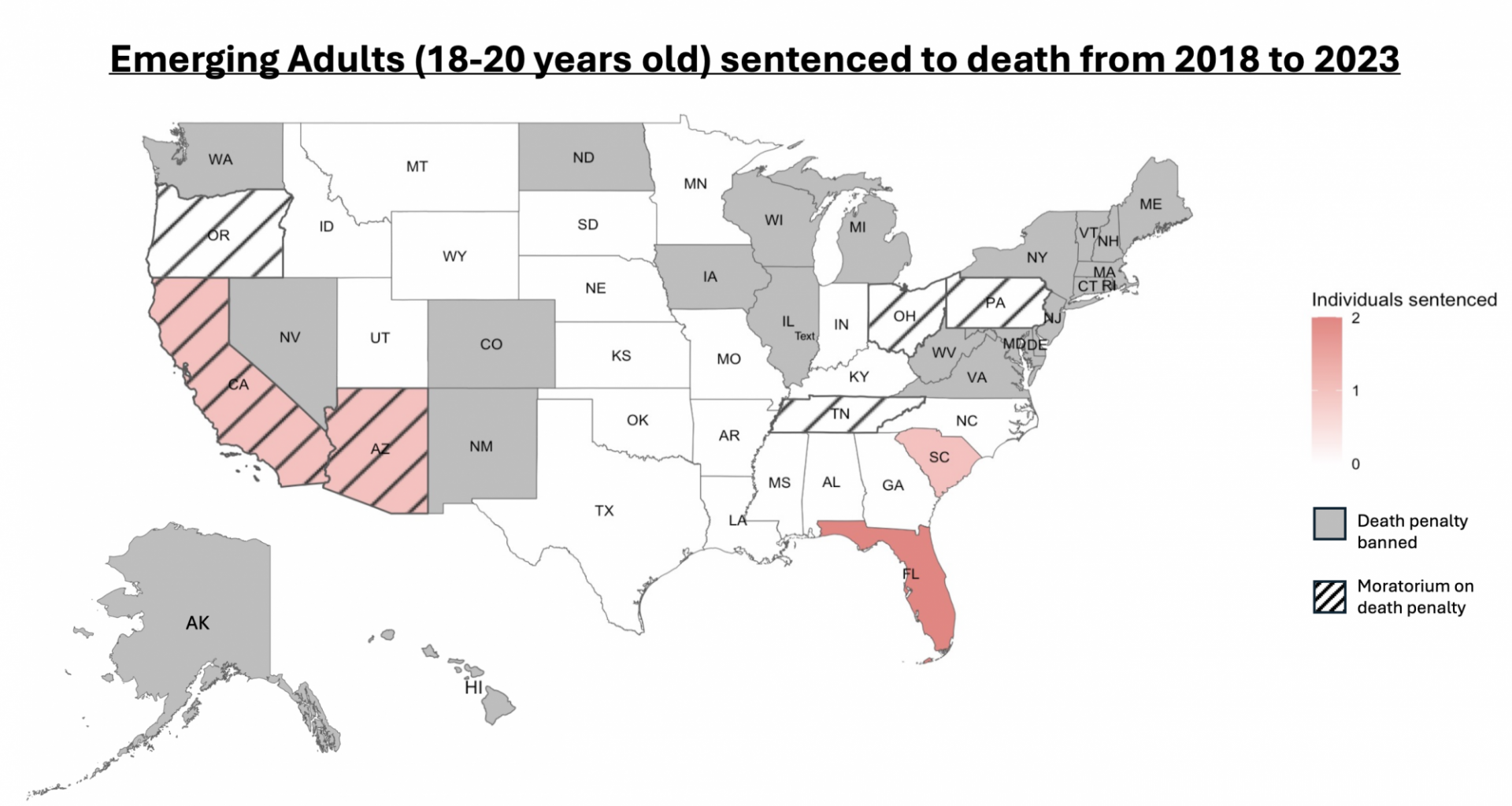How can neuroscientific and psychological research on brain and behavioral development inform justice reform?
Eighteen years of age is commonly seen as the bright dividing line between an individual’s status as a juvenile (<18) and an adult (>=18) in a variety of legal concepts. Yet, recent neuroscientific and psychological research has and continues to show that the human brain continues to develop beyond this age. The American Psychological Association (APA) recently affirmed this finding in their resolution on August 3, 2022. An ever-growing corpus of research in these fields further suggests significant brain and behavioral development occurs between the ages of 10 into the 20s.
As such, neuroscientific and psychological research on brain and behavioral development might be able to inform the construction of a fairer, more equitable justice system in the treatment of young offenders. Towards this end, this research aims to focus on topics at the intersection of law and developmental neuroscience.
One specific area in which the science can be informative is in the extension of legal protections offered to juveniles (< 18 years) to late adolescents/young adults (18 to 21 years old). In a series of seminal judgments, the US Supreme Court deemed the imposition of capital punishment and mandatory life without parole (LWOP) for juveniles unconstitutional (Roper v. Simmons, 2005; Graham v. Florida, 2010; Miller v. Alabama, 2012) due to, among other factors, their level of cognitive and psychosocial (im)maturity. Recent evidence suggests that, at least in some circumstances, late adolescents show similar neurocognitive capacity to minors, suggesting that the legal protections offered to juveniles should also be extended to this age category.
Another area in which developmental science has been informative is in the raising of the minimum age of juvenile transfer to adult criminal courts. Based on individual state regulations, juveniles can be transferred to adult criminal courts depending on the situation and severity of their crimes. States vary in the minimum age at which such transfer can occur with many states having no minimum age. Yet, psychological evidence has shown deleterious effects of incarceration on adolescents and increased recidivism. Such effects are especially pernicious at an age when brain and cognitive development is still undergoing significant developmental changes.
Re-thinking the judicial sanctions imposed on adolescents is another area of importance. Longitudinal psychological studies conducted over the past few decades have demonstrated that formal processing of young offenders at their first arrest as opposed to diversion is related to increased recidivism and a variety of poor developmental outcomes in both the short and long term. Research in this area highlights the importance of a neurodevelopmentally informed approach in the treatment of young offenders in our legal system.

Fig 1. Heat map of death penalties issued to emerging adults from 2018-2019 and death penalty status across US states

Fig 2. Bar charts of death penalties issued in Florida, Arizona, South Carolina, and California per year
The map above (Fig. 1) displays the status of the death penalty and the number of emerging adults who have been sentenced to death in each state from 2018 to 2023. An emerging adult in this context is defined as an individual aged 18 up to 21 years of age. Twenty-three states (shaded in gray) have banned the death penalty entirely, while six states (striped) currently have a moratorium (temporary prohibition) on it. Within the past five years, only six states have sentenced emerging adults to death. South Carolina, California, and Arizona have all sentenced one emerging adult to death in 2019, 2021, and 2023 respectively. Florida is the only state to have sentenced more than one emerging adult to death in the past five years, sentencing one individual in 2018 and 2019 each. The bar graphs (Fig. 2) zoom in on each of the four states shaded red, summarizing the number of emerging adults given the death penalty from 2018-2023.
Data used in these figures was found from the Death Penalty Information Center: https://deathpenaltyinfo.org/facts-and-research/sentencing-data/state-death-sentences-by-year
For an additional Young Adult Capital Punishment Visualizer, see: https://fablab-website.onrender.com/
Interested individuals can refer to the following documents:
- For an overview of neuroscientific and psychological research and the treatment of young offenders (juveniles and young adults) in the United States:
- Casey, B.J., Taylor-Thompson, K., Rubien-Thomas, E., Robbins, M., & Baskin-Sommers, A. (2020). Healthy Development as a Human Right: Insights from Developmental Neuroscience for Youth Justice. Annual Review of Law and Social Science, 16: 203-222. https://doi.org/10.1146/annurev-lawsocsci-101317-031101
- For extending juvenile legal protections to young adults in the United States:
- Casey, B.J., Simmons, C., Sommerville, L.H., & Baskim-Sommers, A. (2022). Making the Sentencing Case: Psychological and Neuroscientific Evidence for Expanding the Age of Youthful Offenders. Annual Review of Criminology, 5: 321-343. https://papers.ssrn.com/sol3/papers.cfm?abstract_id=4008798
- Graham v. Florida, 560 U.S. 48 (2010).
- Miller v. Alabama, 567 U.S. 460 (2012).
- Roper v. Simmons, 543 U.S. 551 (2005).
- Commonwealth v. Sheldon Mattis, 492 Mass. (2024).
- For re-thinking the judicial sanctions imposed on adolescents:
- Cauffman, E. (2023). Adolescent Contact, Lasting Impact? Lessons Learned From Two Longitudinal Studies Spanning 20 Years of Developmental Science Research With Justice-System-Involved Youths. Psychological Science in the Public Interest, 24(3): 133–161. https://journals.sagepub.com/doi/full/10.1177/15291006231205173